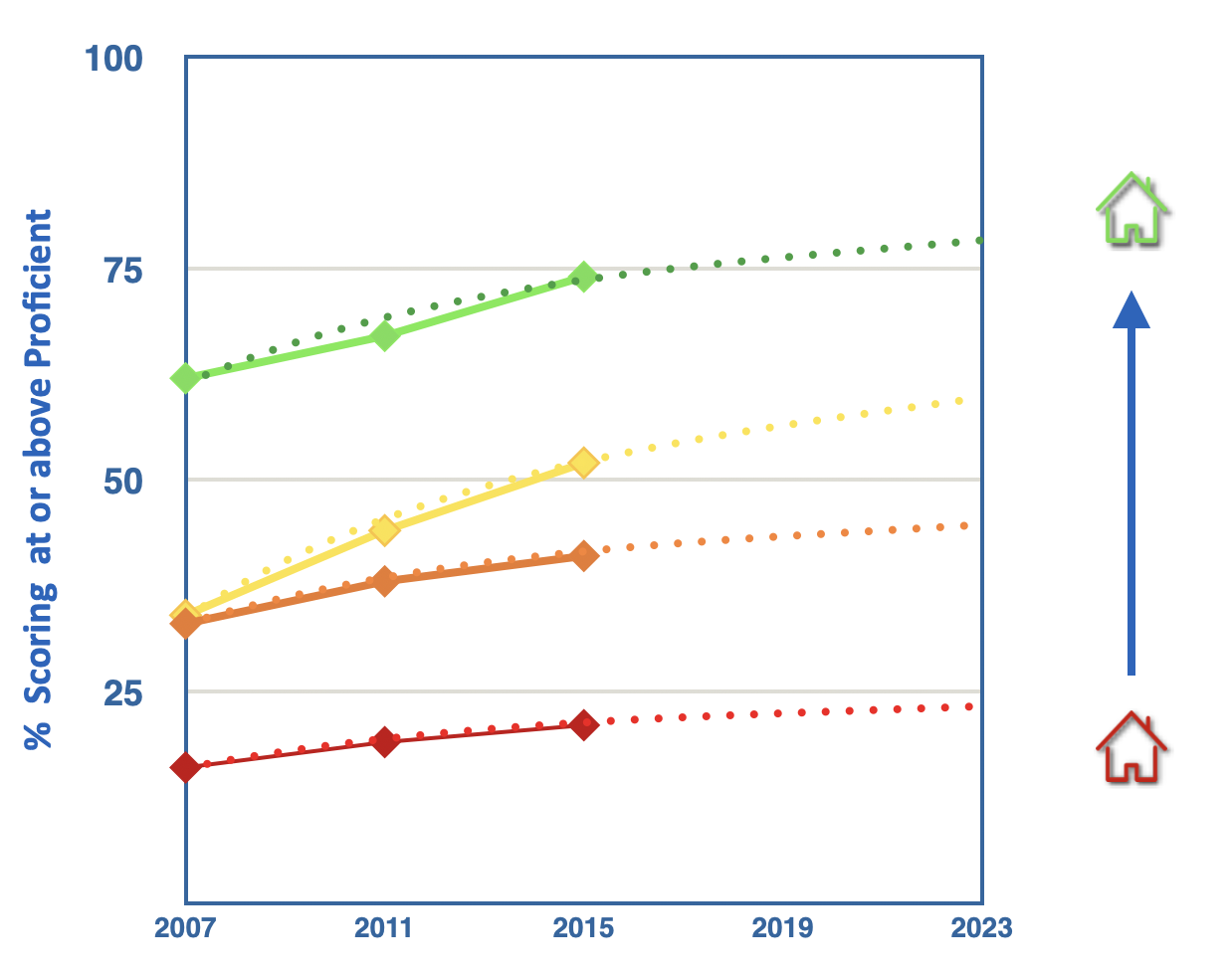NAEP Data Analysis
For over two decades, through the Nation’s Report Card, the National Center for Education Progress (NAEP) has shared data drawn from survey questions related to “factors beyond school.” The NAEP Data Explorer allows users to compare survey questions with standardized reading assessments. Unite for Literacy used this tool to explore the interaction of 8th-grade student performance and their responses to survey questions and discovered hidden patterns that can help community stakeholders see powerful connections between books in the home, habits of reading, and reading proficiency.
Unite for Literacy sorted 8th graders into four subgroups, based on two survey questions:
1. How many books do you have in your home?
2. How often do you choose to read for fun?
8th-grade students who reported having:
1. More that 100 books in their home, and
2. A daily habit of reading, outperformed their peers on the NAEP reading assessment.
Variables related to the availability of books and habits of reading show consistent patterns between higher- and lower-performing students.
21% of 8th-grade students who reported having 100 or fewer books in their home and less than a daily habit of reading, scored at or above proficient on the NAEP reading assessment.
74% of 8th-grade students who reported having more than 100 books in their home and a daily habit of reading scored at or above proficient on the NAEP reading assessment.
If we assume the 8th-grade response distributions reflect the community at large, Unite for Literacy predicts
ONLY 8% of households
meet the two conditions vital for supporting healthy literacy development:
100+ books in the home, and
A daily habit of reading.




